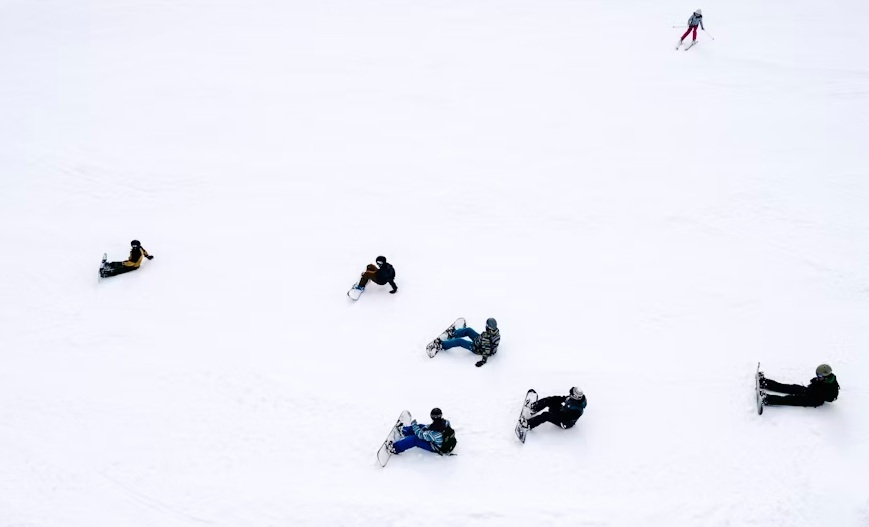Winter doesn’t stop teens from hitting the field, rink, or slopes. Families still have to head out for football games, hockey practice, or weekend skiing.
The challenge is making sure your teen stays safe and warm while enjoying these activities. Parents often resort to practical clothing that provides comfort without hindering movement. For example, a boys Carhartt vest can be an easy choice when layering for chilly practices or casual outdoor games.
However, preparing teens well for the season involves more than clothing; it also includes understanding risks, motivation, and injury prevention. This preparation can make a big difference, turning an uncomfortable day into a fun-filled one. The following tips will help ensure your teen is ready for anything.
Dressing Teens the Right Way for Winter Sports
Cold-weather sports require smart clothing choices that balance warmth, comfort, and mobility. When choosing, focus on thermal insulation and wind resistance. According to TIME, a material’s ability to trap heat and block wind is critical.
Start with layering. Use a base layer consisting of synthetic blends or wool, not cotton. Cotton traps moisture, making the body colder. Experts note that poor clothing choices can even increase hypothermia and frostbite risks, which affect thousands yearly.
Moisture-wicking fabrics like wool or synthetics insulate better, regulate temperature, and reduce health risks. Starr Western Wear recommends using wool or canvas work jackets, as they provide better insulation and durability for colder seasons.
Next, add an insulating layer such as fleece, followed by a waterproof and windproof shell to block the elements. Modern sports gear has made layering easier and more effective. Lightweight, breathable materials now provide better insulation without unnecessary bulk.
Experts recommend using a winter jacket that extends past the hips. They also suggest dressing children with one extra layer of clothing compared to adults to keep them warmer. The Associated Press highlights that proper layering also helps protect against frostbite, a condition that can damage skin within minutes in freezing weather.
This flexibility is key because once a teen starts sweating, the risk of chills increases when activity slows.
Protecting Teens From Cold-Weather Exercise Risks
Sports in winter come with health risks. Frostbite and hypothermia are common, but there are other concerns. Experts also note that exercising in cold weather can strain the heart and lungs, particularly for those with existing conditions.
When the air is cold and dry, the bronchial tubes can tighten, making breathing harder during exertion. According to Real Simple, cold air spikes the heart rate and raises blood pressure, increasing overall risk. They recommend taking breaks and limiting exposure when temperatures fall dangerously low.
Covering the nose and mouth with a scarf or gaiter also eases lung stress in freezing air. Beyond breathing challenges, hydration is another overlooked issue. Teens often skip water breaks because they don’t feel as thirsty in the cold. But dehydration still happens in winter.
According to the University of Denver, it can impair both performance and health.
Sweat evaporates faster in dry air, so athletes may not notice fluid loss, making regular hydration breaks essential. Parents should also keep extra pairs of gloves and socks in bags, as wet clothing increases the risk of frostbite.
Teaching kids how to adjust layers as activity changes keeps them safe, comfortable, and independent during winter sports. In addition to these physical preparations, addressing the mental side of cold-weather exercise is just as important for a successful season.
Keeping Teens Motivated Through the Chill
Motivation dips when the weather turns harsh. Even the most dedicated athletes may struggle to train outside in freezing conditions. According to BBC Future, cold air makes exercise feel tougher, even when physical effort stays the same. This perception discourages many teens.
Yet, experts note that cold-weather activity has significant mental health benefits. Exercise outdoors can ease seasonal affective disorder symptoms, boost resilience, and build self-confidence. Researchers also found that warming up indoors before heading out improves endurance and reduces cold-related strain.
Teens who skip this step risk faster exhaustion. You can support motivation in minor but effective ways. Start by encouraging warm-ups indoors before heading outside. This reduces the shock of the cold and stimulates the muscles. Team challenges or group training can also help, as teens are more likely to stay committed when they are part of a supportive group.
Families can reinforce routines by making winter activities part of the weekly schedule, not optional tasks. These steps build resilience and keep teens engaged with sports, even when temperatures drop.
People Also Ask
1. How can parents encourage teens to enjoy winter sports?
Parents can make winter sports fun by adding variety. Rotate activities like sledding, snowshoeing, or skating instead of sticking to one sport. Allow teens to invite friends, pack warm snacks, and celebrate small wins. This transforms exercise into shared memories, not just physical training.
2. How do you choose the right winter footwear for teens?
Look for boots that are waterproof and insulated, but still breathable. Prioritize soles with a solid grip so you don’t slip on ice. Ensure there’s enough room for thick socks, but not so much that their feet slide around inside, which can cause blisters.
3. How can teens balance indoor and outdoor training in winter?
Mixing indoor and outdoor workouts helps teens stay consistent during winter. Parents can encourage indoor strength training or yoga sessions on severe weather days while still planning outdoor runs or games when conditions improve. This balance prevents setbacks and builds well-rounded fitness through the colder months.
Preparing teens for cold-weather sports is more than just about clothing. Families must consider layering, health risks, motivation, and new gear innovations. By addressing each of these areas, you can ensure your teen stays active, safe, and comfortable throughout the season. With the right steps, winter sports and outdoor fun remain enjoyable rather than a struggle.

